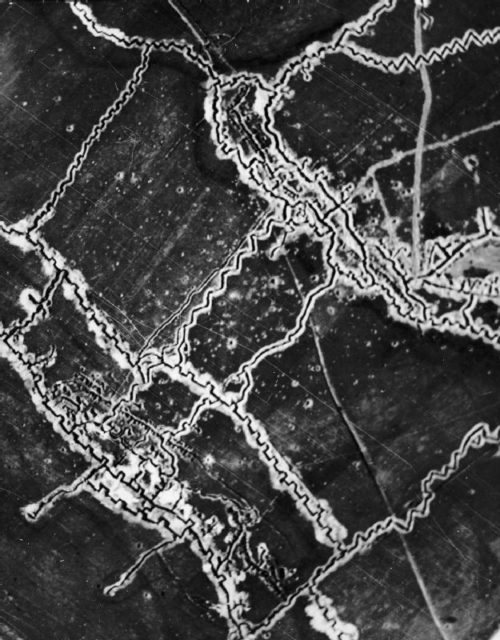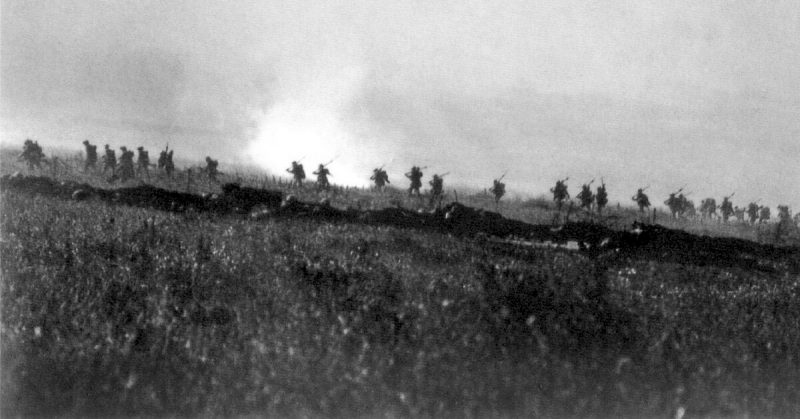The Battle of the Somme, launched by the Allies against German lines on July 1, 1916, was an extraordinary offensive. A huge mass of troops and artillery were thrown against the enemy lines. One of the greatest British attacks of the First World War, it is mostly remembered as a terrible incident of futility and loss.
Among the tragic stories to emerge from the Somme was that of the Ulster Division.
The Start of the Somme
On the first day of the Somme, the Ulster Division were ordered to assault the Schwaben Redoubt. It was a huge fortification built into the German lines between Thiepval and St Pierre-Divion. Attacking the redoubt was a formidable task. As well as the fortress, an elaborate network of trenches created strong points for the defenders to hold.
The Schwaben Redoubt was characteristic of the German approach to trench warfare. Trying to hold as much ground as they could with as few men as possible, they dug deeply and used more permanent approaches to the building than the Allies.
The Allied plan to assault the Schwaben Redoubt and the rest of the fortifications along the line were also characteristic of the war. The Allies launched a massive preparatory bombardment before sending their men straight at the enemy.

A Significant Date
The men of the Ulster Division took the date of the attack as a good omen. Drawn from the Protestant areas of Northern Ireland, their allegiance lay with the United Kingdom and the Protestant political and religious faction. The most significant victory in their history was the Battle of the Boyne, fought in 1690. In that struggle, the Protestant William of Orange defeated the Catholic King James II, ensuring a Protestant ascendancy in Britain and Ireland.
The Battle of the Boyne occurred on July 12 in the new style Gregorian calendar. In the old style Julian calendar, in use in Britain at the time of the Battle, that date was July 1.
The First Assault
As the preparatory barrage ended, the Ulstermen swarmed out of their trenches and rushed across No Man’s Land. Fast on their feet, they reached the first trench line before the Germans could emerge from the shelter of their dugouts. Those trenches were quickly taken.
Moving on, the Ulstermen threw themselves into the assault on the Schwaben Redoubt. Fierce fighting ensued. Packs of grenades were used to wipe out men sheltering in dugouts. Explosives were dropped down stovepipes into living quarters. Combat was fierce and intense.
The Thiepval Flank
Meanwhile, an assault on the trenches at Thiepval had been repulsed. Six waves of British troops had been launched against the Germans without a single man getting through. Further efforts were stopped as the futility of these bloody assaults became apparent.
The failure at Thiepval had terrible consequences for the Ulster Division. Four Belfast battalions rushed forward in another wave of attacks. The German guns at Thiepval turned upon their flank. The heavy enfilading fire tore into the unlucky Ulstermen.

Victorious but Leaderless
Despite this, by mid-morning, they had succeeded in taking the Schwaben Redoubt. They had lived up to their bold expectations, taking 500 prisoners as well as the vital fortification.
However, it had come at a substantial cost. The terrible fighting resulted in a shortage of officers. They had no leader and no way of contacting the commanders of the Division.
Launching a brave foray toward the guns that had caused such mayhem around Thiepval, they found an unmanned trench. It could have been their opportunity to get around the rear of the Germans. Without orders or leaders, they lacked the initiative to do so.
Stopped by their own Artillery
Their original orders did give them a further objective. After Schwaben Redoubt, they were to move on to the next German stronghold in the line – Stuff Redoubt. They began to advance again.
They had been too successful for their own good. The British timetable did not expect them to be attacking the Stuff Redoubt yet. There were no German troops visible as the British artillery were still pounding it. They waited and then seeing German troops gathering for a counterattack, the men of the Ulster Division withdrew back to the Schwaben Redoubt.
Isolation
In the area around Thiepval, only the Ulster Division had succeeded in their initial objective. No-one else had punched through the first line of German trenches, never mind advancing on the second line.
As a result, the Ulstermen were isolated. German troops gathered on both their flanks. A series of unremitting attacks began, as the Germans tried to retake their fort. With the same determination that had seen them advance, the Ulstermen sought to cling to the ground they had taken.
Withdrawal to New Trenches
It had been a long day of hard fighting, mounting casualties and they were running short of ammunition. Being the only successful division in the advance had cost the Ulsters dearly. German counterattacks focused on them.
At last, they could hold on no longer. They withdrew from the Schwaben Redoubt, for which so much blood had been spilled. Moving back to the former German front line, they took up defensive positions and were relieved by the West Yorkshire.
The attack had cost the Ulster Division 2,000 men dead, 2,700 wounded, and 165 captured. Much of the opportunity they had shed their blood for was wasted.
This first of July was not one that would be celebrated in Ulster.
Source:
Martin Marix Evans (2002), Over the Top: Great Battles of the First World War.
